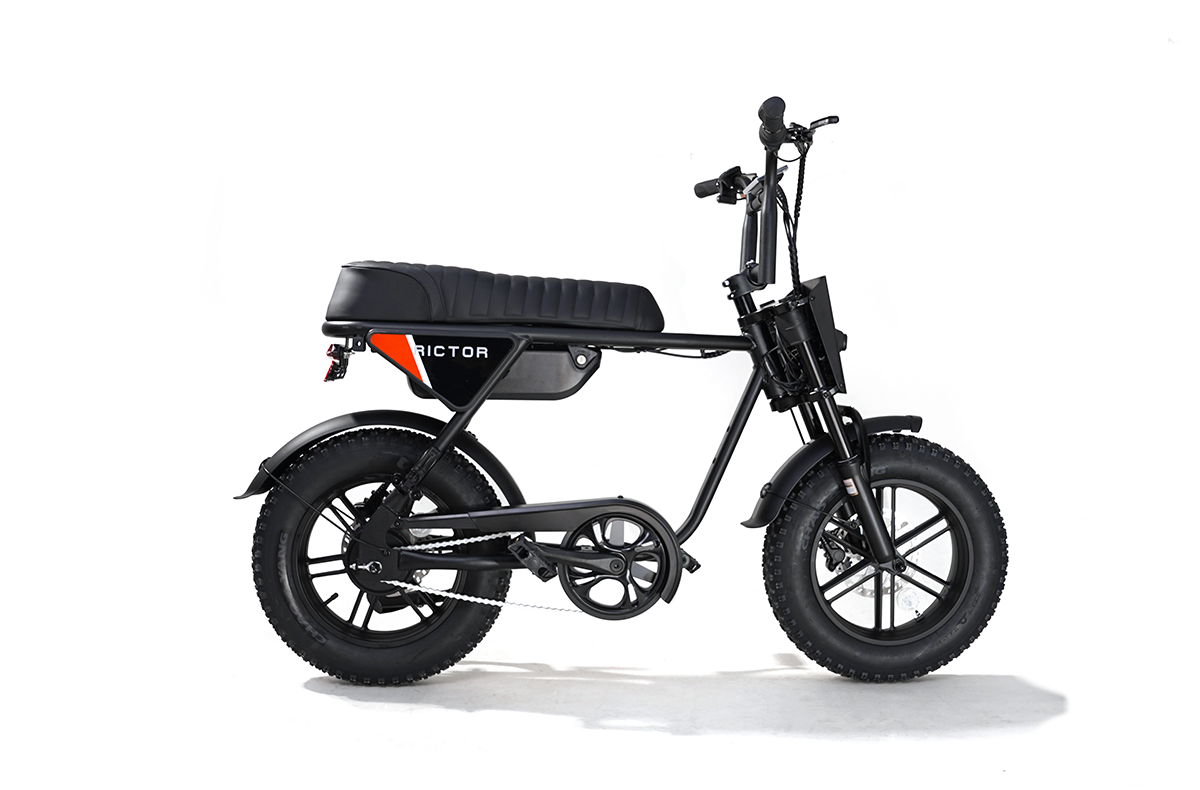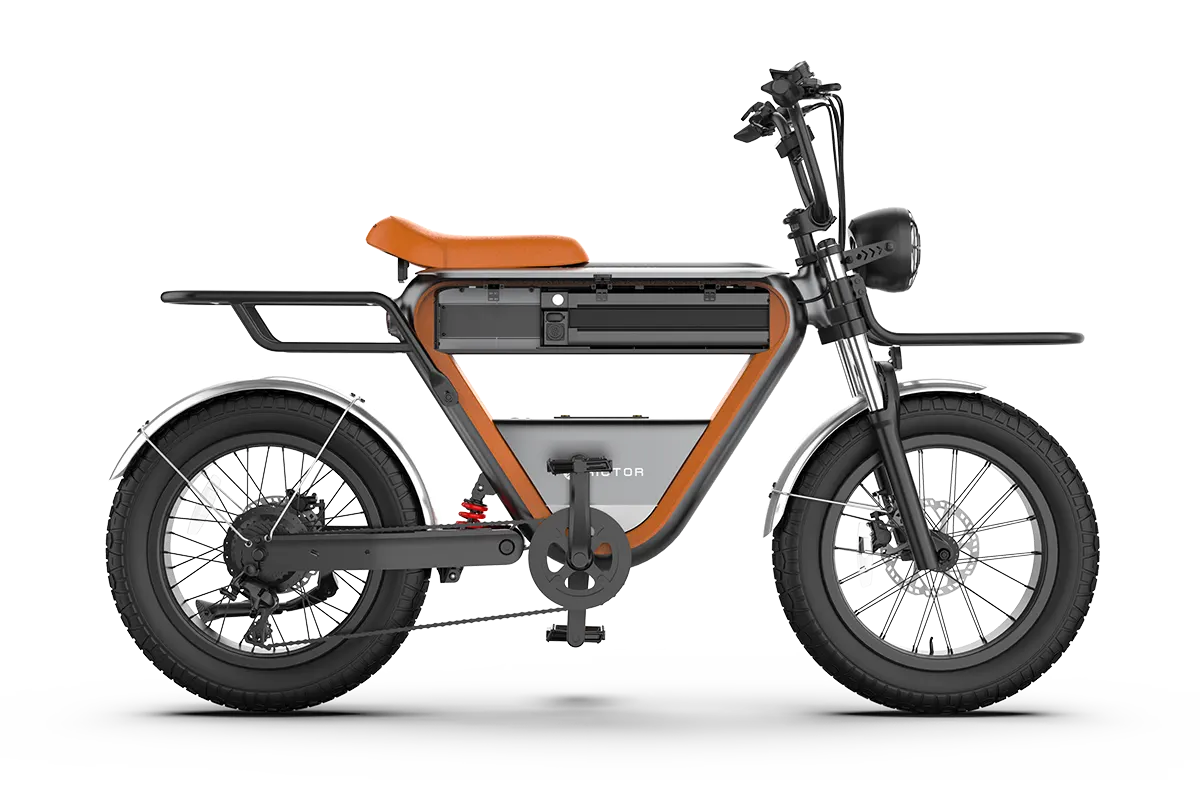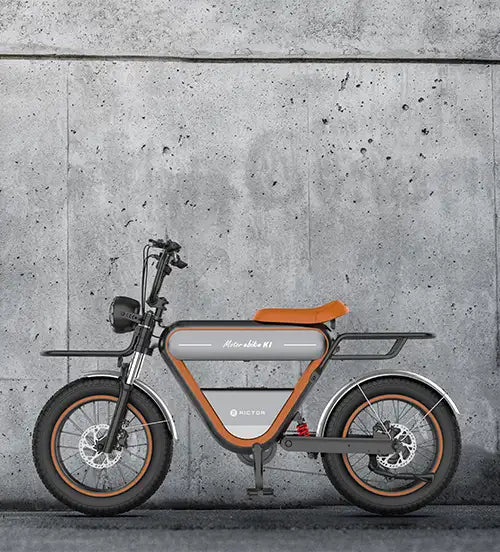
What is An Electrical Bike
An electrical bike is basically a regular bicycle that comes with a motor to assist you when you pedal.
In some cases, the motor can even take over completely with a throttle, so you don’t have to pedal at all. It’s just a bike with a motor, designed to make your ride easier, especially on hills or longer distances.
Types of Motors in Electrical Bike
The motor is what really sets an electric bike apart from a regular bike. Over the years, I’ve tried different types of motors.
Rear Hub Motor – This motor is placed in the rear wheel hub, powering the back wheel. In my experience, it provides a really stable and smooth ride.
I’ve found rear hub motors to be pretty common on commuter bikes, and they’re perfect for daily use. The ride feels comfortable, and it’s easy to get around town with one of these.
Front Hub Motor – With the motor in the front wheel hub, the power goes straight to the front of the bike. I’ve noticed that these motors give the bike a slightly different feel compared to rear hub motors, but they still work really well. If you’re looking for something lighter and more casual, this is a great option. It’s perfect for short, relaxed rides.
Mid-Drive Motor – The mid-drive motor is positioned in the center of the bike, right by the pedals. This motor type has been my personal favorite, especially for long rides or tackling hills.
Since the motor powers the bike’s gears directly, it feels much more balanced, and I can really feel the efficiency when I ride. I’ve used mid-drive motors on mountain bikes and commuter bikes, and they give me that extra boost when I need it most.
It all depends on what you’re looking for. If you’re after a smooth and stable ride for everyday use, a rear hub motor might be the way to go. If you want something that feels a bit more balanced and efficient, I’d recommend giving a mid-drive motor a try.
Electrical Bike Pedal Assist Modes
On most electrical bikes, you’ll find a range of pedal assist modes, and the cool part is, you can easily change the level depending on how much help you want from the motor.
Typically, the levels range from 1 to 5 or 6, with each level giving you a different amount of motor assistance.
For example, when I’m just cruising on a flat road or going easy, I’ll stick to Level 1. This gives me a little bit of a boost without overdoing it, just enough to make the ride comfortable.
When I’m heading up a hill or feeling like I need some extra power, I’ll increase the assist to Level 3 or 4. This gives me a nice balance of power and control, especially when tackling steeper inclines. I can still pedal and get a good workout, but the motor takes the edge off, so I don’t feel like I’m going to burn out halfway up.
And when I’m really pushing it, like on longer rides or rougher terrain, I’ll crank it up to Level 5 or 6.
At this level, the motor really kicks in, and I can go longer distances or ride up steeper hills without breaking a sweat. It’s great for when I want to conserve energy or get through tougher conditions more easily.
SEE ALSO How Do Electric Bike Work
Types of Batteries in Electrical Bike
The type of battery you choose can really impact how far you can ride, how fast the bike can go, and how long it lasts.
Lithium-Ion Batteries
This is by far the most common type of battery you’ll see in modern electric bikes, and for good reason.
Lithium-ion batteries are lightweight, have a long lifespan, and provide great range. I’ve found that these batteries offer the best combination of power and weight, which makes them perfect for most riders.
Whether I’m commuting or going for a weekend ride, lithium-ion batteries have always delivered consistent performance. The range typically varies from 20 to 70 miles on a single charge, depending on the motor and level of assistance you’re using.
Lithium-Polymer (LiPo) Batteries
Lithium-polymer batteries are similar to lithium-ion batteries, but they have a slightly different chemistry. They tend to be even lighter and can be molded into different shapes, which makes them useful for more compact bike designs. While I haven’t used a lot of bikes with LiPo batteries personally, I’ve heard that they’re great for riders who want a lighter bike without compromising too much on performance. One downside is that they can sometimes have a slightly shorter lifespan than lithium-ion batteries, but they’re still a solid choice.
Lead-Acid Batteries
Lead-acid batteries are much heavier and less efficient than lithium-based batteries, but they are also more affordable.
I’ve only used a few electrical bikes with lead-acid batteries, and while they’re budget-friendly, I noticed they tend to have a much shorter range and slower charging times.
These batteries are more commonly found on older or budget e-bikes, and they aren’t as commonly used in modern electric bikes. Still, if you're looking for an entry-level electrical bike, you might come across one with a lead-acid battery.
Integrated Batteries
More recently, some electric bikes have integrated batteries, meaning the battery is built directly into the bike’s frame, often hidden for a sleek look.
I’ve ridden bikes with integrated batteries, and I love how clean and streamlined they look. These batteries are typically lithium-ion and can offer the same great performance as external batteries, with the added benefit of a more aesthetically pleasing design.
The downside is that when the battery needs to be replaced, it’s a bit more complicated and may require professional assistance.
Different Types of Electrical Bike
Electric bicycles come in all shapes and sizes, and the type you choose really depends on how you plan to use it. Over the years, I’ve had the chance to ride and test out various kinds of e-bikes. Here are the main types of electric bikes you’ll encounter:
Commuter E-Bikes
Commuter e-bikes are designed for people like me who use them for daily transportation, whether that’s riding to work, running errands, or just getting around town.
These bikes typically feature a lightweight frame, comfortable seating, and a motor that gives you just enough boost to make the commute smooth and easy. I’ve used commuter electrical bikes for a while now, and I can tell you that they’re a game-changer, especially when it comes to avoiding traffic or getting to work without breaking a sweat.
Cargo E-Bikes
Cargo electric bikes are a step up in size and power, designed to carry heavy loads or even children. These bikes have a much larger frame and more robust motors, making them perfect for transporting groceries, packages, or other items.
I’ve ridden cargo e-bikes when I needed to haul more than just myself, and let me tell you, they make a huge difference. With the motor assisting you, the added weight doesn’t feel nearly as hard to manage, and you can still zip through traffic like a pro.
Mountain E-Bikes
If you’re into off-road riding like me, mountain e-bikes (or eMTBs) are a blast. These bikes come with larger, knobby tires, a stronger frame, and usually a mid-drive motor to help you power through rugged trails, steep hills, and rough terrain.
I’ve taken mountain electrical bikes on everything from dirt trails to rocky paths, and I love how the motor assists with climbing hills and maintaining speed on uneven ground. They’re perfect for adventurous riders who want to go beyond the pavement.
Cruiser E-Bikes
Cruiser e-bikes are all about comfort and relaxation. These bikes often have a step-through frame, wide, cushioned seats, and a more laid-back riding posture. I’ve used a cruiser electric bike on more leisurely rides around the neighborhood or down to the beach, and I have to say, it’s a great way to take in the scenery without putting in too much effort. The motor provides just enough assistance to make the ride smooth and easy, without feeling like you’re exerting too much energy.
Folding E-Bikes
Folding e-bikes are a perfect choice for anyone who needs a compact bike they can easily store or take with them on public transport. These bikes have a folding frame that allows them to collapse down into a small, portable size. Despite their smaller size, they still pack a punch in terms of motor power and range, making them a practical option for city dwellers or commuters.
Where to Buy Your First Electric Bike
There are so many electrical bikes, and it’s important to choose one that fits your needs. Here are some tips I’ve learned from my own experience to make the process easier:
-
Tip 1: Test Ride a Few Bikes
Before making any decisions, visit local bike shops and test ride a few models. It's essential to get a feel for the bike, how it handles, and how comfortable it is. Many shops will let you try out different models, which gives you the chance to compare and find what feels right. -
Tip 2: Think About Your Commute
Ask yourself how you'll be using the bike. Is it for daily commuting, weekend adventures, or just casual rides? This will help you choose the right type of electrical bike, whether it’s a commuter bike, mountain electric bike, or something in between. -
Tip 3: Consider Battery and Range
Pay attention to the battery size and range. A larger battery will allow you to go further on a single charge. I recommend looking for a battery that lasts at least 30-40 miles, especially if you’ll be using the bike for commuting. -
Tip 4: Check for Warranty and Support
Make sure the bike comes with a good warranty. E-bikes can be a big investment, and having a reliable warranty and customer support is important.
After all my research and test rides, I ended up choosing the Rictor K1 electric bike for my daily commute, and it’s been a game-changer. The sleek design, comfortable ride, and reliable motor assist make it perfect for everyday use. If you're looking for a great commuter bike, I highly recommend the Rictor K1 best electric bikes for commuting—it’s a solid choice for both beginners and experienced riders alike.
FAQs
How far can I ride on a single charge?
The range of an e-bike depends on several factors, including the size of the battery, the motor type, and how much assistance you’re using. Most e-bikes will give you anywhere from 20 to 70 miles on a single charge. For a commuter bike like the Rictor K1, you can expect a reliable range that covers most daily commutes without needing to recharge mid-day.
What type of motor is best for commuting?
For commuting, I recommend a rear hub motor or a mid-drive motor. The rear hub motor provides a smooth and stable ride, while the mid-drive motor gives a more efficient ride, especially on hills. Both types are great for daily use, with mid-drive motors offering more power for longer or hilly commutes.
Do I have to pedal on an e-bike?
No, you don’t always have to pedal. Most e-bikes offer pedal assist, where the motor kicks in to help you pedal. However, some e-bikes also come with a throttle, which allows you to ride without pedaling at all. It’s all about the level of assistance you want.






